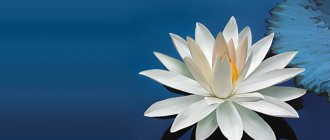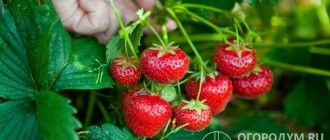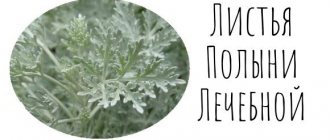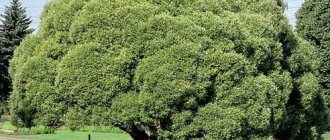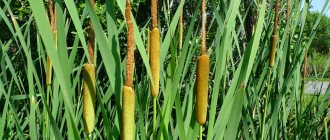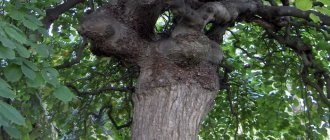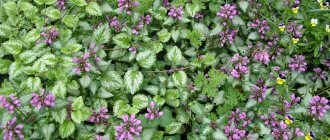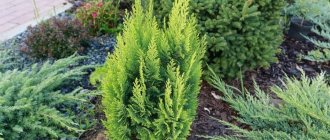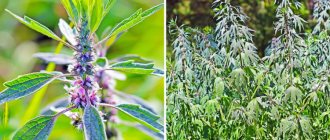About hacienda » Flowers and plants » Medicinal plants
Medicinal plants
Great plantain (P. major) is a perennial herbaceous plant with a loose basal rosette of wide oval leaves. In summer, cylindrical ears up to 20 cm high, consisting of tiny green flowers, grow from its middle. Lanceolate plantain (P. lanceolata), which forms dense rosettes of narrow lanceolate leaves, is also used in herbal medicine.
Plantain. Photo for publication is used under standard license ©ofazende.ru 495
Gardeners and gardeners consider plantain a weed, but meanwhile this plant has been successfully used in folk medicine for centuries. And some of its varieties can perfectly decorate any garden!
Parts used:
- leaves (plantain major and lanceolate)
- seeds
- seed coat (flea and ovate plantain)
Related article:
Sage plant: photos, types, cultivation, planting and care
Flea plantain (P. psyllium)
Mediterranean annual with peduncles up to 60 cm high, at the end of which ovoid heads of small white flowers are formed. In herbal medicine, the black seeds of the flea plantain and the pink seeds of another species, the ovate plantain (P. ovata), are widely used.
Flea plantain
Varieties
Pink plantain (Rosularis variety)
The variety resembles the shape of its green inflorescences of double rose flowers.
Pink plantain
Rubiflora
The variety has purple leaves.
"Rubiflora"
"Variegata"
The variety has marbled white leaves.
Marbled white leaves
One of the nine sacred herbs of the Anglo-Saxons, plantain was considered a powerful remedy for headaches. “Aaknunga,” an ancient collection of medical texts written in the 11th-12th centuries, connects the origin of these plants with the god Wodan: “... nine poisons grew from heat. Then Wodan took his sword and turned them into nine herbs. The wise god created these nine herbs and sent them into the world to heal everyone, both rich and poor..."
Related article:
The benefits and harms of rose hips for the health of the body
Features of the herbaceous plant plantain
Plantain has a short rhizome, from which cord-like thin roots extend. The basal leaf rosette includes petiole leaf plates. As a rule, representatives of this genus have leafless and erect peduncles. However, sometimes there are also species in which the peduncles are leafy and branched. The dense terminal capitate or spike-shaped inflorescence consists of very small flowers that do not represent any decorative value. The fruit of this plant is a multi-seeded capsule. As a rule, wind is involved in the pollination process of plantain.
Plantain. Medicinal properties and contraindications.
Use of plantain for medicinal purposes
Having understood the composition and what plantain looks like (see photo), we will find out in what areas of medicine this miracle herb is used. The most famous properties of plantain include, of course, its wound healing and hemostatic properties. But in fact, the medicinal effect does not end there.
Due to the presence of tannins and phytoncides in the plant, the herb is used for ailments associated with inflammation and infection. In addition, the following actions can be distinguished:
- Anti-inflammatory.
- Hemostatic.
- Antiseptic.
- Painkiller.
- Decongestant.
- Healing.
The rich biochemical composition makes it possible to achieve such effects on the human body as sedative, expectorant, and diuretic. Plantain-based recipes are used to reduce high blood pressure. An excellent effect is achieved in the fight against insomnia and many other ailments.
Also, the leaves and stems of the plant are used to prepare various folk ointments, decoctions, and tinctures. These agents have an excellent effect in the fight against such types of infections as streptococcus and staphylococcus. It is recommended to gargle with plantain decoctions for tonsillitis and purulent sore throat.
Important! Recipes based on plantain are a powerful preventive and therapeutic agent for the development of human cancer.
Growing plantain
How to plant
A species such as large plantain is distinguished by its undemanding nature in terms of soil composition. But at the same time, it is not recommended to grow it on heavy or marshy soil. It should be remembered that such a herbaceous plant is grown in the same place for no more than 2 or 3 years.
Before proceeding with direct sowing, the site should be prepared. To do this, it is dug up, and fertilizers should be added to the soil, so for every one square meter of plot, 30 grams of superphosphate, 4–6 kilograms of compost and 15 grams of potassium fertilizer are taken. After digging the area is completed, its surface is leveled, and it should also be compacted.
Gardeners recommend sowing plantain seeds in open soil before winter. To do this, prepare grooves, the depth of which should be about 0.5 centimeters, and the distance between them should be from 0.45 to 0.6 meters. After the grooves are ready, you need to distribute plantain seeds into them, which are covered with a not very thick layer of earth. The advantages of pre-winter planting are that in the cold soil the seed undergoes natural stratification, and with the onset of spring, friendly shoots appear on the site. If it was decided to postpone sowing the seeds until spring, then they will need stratification. To begin with, the seed is removed for a couple of days in a place where the air temperature is from 18 to 20 degrees. After this, the seeds are placed in a glass jar or polyethylene bag, which is filled with moistened sand in a ratio of 1:4. Then the resulting mixture should be placed on a refrigerator shelf intended for storing vegetables for 2 winter months. Systematically, the container with the seed must be removed from the refrigerator and its contents thoroughly shaken. Also, from time to time it is necessary to check the condition of the sand, and if such a need arises, it is moistened.
Seeds are sown at the beginning of the spring period immediately after the soil thaws. Before sowing, the soil on the site must be thoroughly loosened to a depth of 30 to 40 millimeters, after which its surface is rolled. When sowing, seeds should be buried only 1 centimeter into the soil.
Plantain recipes
For colds and severe coughs, it is recommended to take teas and decoctions:
– grind freshly picked leaves, mix with 0.2 liters of water, boil and add 3 tbsp. spoons of honey. Take the prepared mixture one teaspoon once an hour.
– dried leaves are used for tea: 1st method – pour boiling water over 2-3 teaspoons of dry leaves and leave for a quarter of an hour, drink 0.2 liters 3 times a day with honey instead of sugar; 2nd method – 4 tbsp. spoons of dry leaves pour 0.5 liters of boiling water, leave for 1.5 hours, strain, take 1 week 4 times a day according to Art. spoon.
A unique decoction of plantain leaves helps with diseases of the gastrointestinal tract, respiratory tract, and wound healing. When preparing a decoction in 0.2 liters of boiling water, add 2 tbsp. spoons of dry leaves, bring to readiness in a steam bath (1/2 hour), cool, strain. Take 0.1 liter before meals three times a day. To soak or treat wounds, soak a cotton or gauze swab with the decoction.
Plantain care
Plantain grown in the garden is very easy to care for. So, in order for this herbaceous plant to grow and develop normally, it should be provided with timely watering, weeding and loosening of the soil surface between the bushes. Particular attention should be paid to weeding the plantain in the first year of its growth, because at this time the bushes are still relatively weak, and the weeds can choke them out much faster. The first time you need to loosen the surface of the area, you also need to pull out all the weeds after the first seedlings appear. Plantain crops do not need thinning, even if they are excessively dense.
Such a herbaceous plant needs regular feeding. It is necessary to feed the plantain for the first time at the beginning of spring. The second time the bushes are fed after the first collection of leaf plates has been carried out. You can feed plantain with Nitrophoska, and the required dosage should be indicated on the packaging of this fertilizer. Also, instead of Nitrophoska, for every one square meter of land, you can add from 15 to 20 grams of any nitrogen-containing fertilizer.
Growing plantain on your own plot will not be difficult for either an experienced gardener or a beginner. The main thing is to adhere to all the rules of agricultural technology for this crop and take good care of it, and then you will definitely not have problems with this plant.
Plantain description
The second name for plantain is “seven-veined fellow traveler” because of its vertical veins on the leaves and the ability to leave seeds on human clothing and animal fur.
Plantain is found as single plants, occasionally as subshrubs. There are annual and perennial types of plantain. In total there are about 150 species of this herb. Some of them are classified as weeds.
Habitat: subtropical and temperate climatic zones. Found along roads, in steppes, sandstones and meadows.
Harvesting plantain
Experts advise collecting medicinal raw materials from plantain bushes only after the rain has passed. However, before collecting, you should wait until the plants dry thoroughly. In the first year of plantain growth, the bushes are harvested only once per season. Plants of two or three years of age should be harvested 2 times during the season, with the first harvest carried out immediately after the plantain begins to bloom, and the second 6–8 weeks before the onset of the autumn period. The fact is that the bushes must have time to grow new leaves before the end of the growing season.
Only those leaf plates that reach approximately 10–12 centimeters in length should be cut. To dry the collected raw materials, it should be laid out in a shaded place, or it can be placed in a room that is very well ventilated or ventilated, with the optimal air temperature for drying being from 40 to 50 degrees. If desired, the leaf plates can be tied into bundles and hung from the ceiling to dry. When pruning foliage when collecting medicinal raw materials, it is extremely important not to injure the rhizome, as well as the leaf rosette of the plantain. When the medicinal raw material dries, it should have a green-brown or green color and have a faint aroma and bitter taste.
After the lower part of the inflorescences has ripened well, the seeds of this plant should be collected; the fact is that they, like the leaf blades, have medicinal properties. The inflorescences need to be cut off at the base; after they have dried for 3–5 days, they should be threshed.
Collecting plantain seeds July 26, 2013
Collection of raw materials
Plantain leaves are collected all summer - from May to August. Secondary cutting of regrown greenery is possible. Choose young, undamaged leaves, without yellowing. They are cut with petioles, a sickle and mowed with a scythe.
Important! It is prohibited to collect plantain near roads and railways, landfills and industrial enterprises.
You cannot cut off all the leaves on the bush, otherwise the plantain may die. Take only a few leaves from each plant. It is better to collect the leaf in the morning, as soon as the dew has dried, or after rain.
Dry raw materials in the shade or in electric dryers at a temperature not exceeding +50 degrees. Raw materials should be stored in thick paper bags or glass containers, in a dry and dark place, for no more than 2 years.
Procurement of raw materials
Types and varieties of plantain with photos and names
Of the large number of plantain species, only 2 are grown in culture, which provide medicinal raw materials. Their detailed description will be given below.
Sandy plantain (lat. Plantago arenaria), or rough, or Indian, or flea, or flea
This type of plantain is an annual herbaceous plant. The height of branched shoots can reach about 0.4 meters. In the upper part the shoots are glandular-pubescent. The opposite leaf plates of this species are linear and entire; they reach a length of about 70 millimeters. The leaves are serrated at the top. Capitate inflorescences, ovoid in shape, consist of small flowers. The surface of the inflorescences also has dense pubescence consisting of glandular hairs. The fruit of this plant is an ellipsoidal capsule containing seeds. Both the grass and the seeds of this type of plantain have medicinal properties that are used in alternative medicine.
Large plantain (lat. Plantago major), or greater plantain
This species is a herbaceous plant that is a perennial. Thread-like roots extend from a short rhizome. The basal leaf rosette consists of leaf plates with a broad oval shape and relatively long petioles. The height of the erect peduncle is from 0.15 to 0.45 meters; it bears a terminal spike-shaped inflorescence, which has a cylindrical shape and consists of small flowers. The fruit of this species is a multi-seeded capsule. This type of plantain has healing properties in fresh grass, as well as its leaf blades.
Collection and preparation of plantain
Both the leaves and seeds of the plant are suitable for medicinal purposes. The collection of raw materials is carried out at different times. It is recommended to cut off the green part during the flowering period, usually from June to August.
When collecting grass, it is very important to ensure that the collected material does not include spoiled leaves affected by powdery mildew, fungi or various pests.
After cutting, the leaves and stems are laid out in the shade and waited for them to dry completely. You can also use an oven or dryer. The optimal temperature for drying is 40-50 degrees.
Grass seeds must be harvested strictly after they are fully ripe. During this period they are endowed with the most useful properties. Separate the seeds through a sieve, lightly kneading the capsules.
It is recommended to store medicinal raw materials in bags made of natural fabric or paper bags. Shelf life under the right conditions is no more than 24 months.
Properties of plantain: harm and benefit
Medicinal properties of plantain
The fact that plantain has medicinal properties has been known to people for a very long time. Thus, it is very widely used in alternative medicine during the treatment of pleurisy, acute respiratory diseases, bronchial asthma, catarrh of the upper respiratory tract, and tuberculosis. Preparations made from plantain help relieve inflammation, improve gastric secretion and cleanse the blood. Also, this medicinal plant is very effective for gastritis, peptic ulcers, whooping cough, enteritis, enterocolitis, malaria, hemorrhoids, skin diseases, as well as inflammatory processes in the bladder.
Fresh juice obtained from plantain grass helps accelerate regeneration processes in damaged tissues, as well as disinfect wounds and remove pus. It is also known that this herbaceous plant has a calming effect, and therefore it is used for neuroses, insomnia and increased irritability. Preparations made from this plant help normalize blood pressure and also relieve swelling.
The medicinal properties of this plant are also widely used for gynecological diseases. Thus, plantain is used to eliminate inflammation of the mucous and muscular lining of the uterus, and they also stop uterine bleeding and eliminate ovarian dysfunction. This plant is also used to normalize potency in men. Plantain also shows very high effectiveness in the treatment of nephritis, enuresis and diarrhea
Plantain is also widely used externally. So, if there are cracks or cuts on the heels, then this plant will help them heal quite quickly. To do this, it is recommended to use an infusion prepared from plantain; it should be mixed with water, which is used for foot baths. If there are abrasions and calluses, then it is recommended to apply fresh leaves of this plant to the problem areas overnight. The damaged skin should be restored the very next morning.
Plantain is also used to care for the skin of the hands. From it at home you can prepare a fairly effective cream that has healing properties. To do this, you need to combine cow butter or honey with plantain infusion. Fresh juice obtained from this plant is perfect for dry skin. Before applying the juice to the skin, it is recommended to dilute it with clean water. From the resulting solution you can prepare a face mask; to do this, add the required amount of starch to the mixture of juice and water. The resulting mass should be applied to the skin of the face and left for a third to half an hour. After this, wash your face thoroughly with cool running water.
The leaf blades of this plant contain flavonoids, provitamin A, ascorbic acid, vitamin K, enzymes, polysaccharides, uronic acids, tannins, and bitterness. And the composition of plantain seeds includes fatty oils, mucus, carbohydrates, amino acids and oleanolic acid.
For whom is plantain contraindicated?
Despite the fact that plantain is certainly a useful plant with medicinal properties, it, like all medicinal plants, has a number of contraindications. Thus, preparations made from plantain are strictly forbidden to be taken by people who have increased secretion and acidity of gastric juice. If a person has increased blood clotting, then such drugs can also harm him. They should also not be used by those who have an individual intolerance to plantain. Experts advise that before using plantain for the first time to treat any ailment, be sure to consult with a qualified specialist.
Plantain. Medicinal properties and contraindications.
Recipes
Cough infusion . For 1 tbsp. a spoonful of crushed dried plantain leaves, take 2 cups of boiling water. The herb is brewed and infused for about half an hour. Take the strained infusion, 1 tbsp. spoon several times a day.
Plantain juice for ulcers and gastritis . The juice obtained from fresh plantain leaves is diluted in boiled water (1 tablespoon per third of a glass) and taken 15 minutes before meals, three times a day. The course of treatment is 1 month. It is useful to wipe your face with plantain juice after washing to combat acne.
Plantain juice with honey for bronchitis . Mix the products in equal parts and boil the mixture for 20 minutes over low heat. Take chilled medicine, 1 tbsp. spoon half an hour before meals, three times a day.
Diarrhea remedy . Plantain stems with peduncles and seeds are poured with boiling water in a free proportion, boiled for 5 - 6 minutes. Leave for half an hour and drink like regular tea.
Bleeding and weak gums . Chew fresh, well-washed plantain leaves and keep in your mouth for 5 - 10 minutes. Carry out the procedure up to 5 times during the day.
Callus softening . At night, a fresh plantain leaf is applied to the callus and covered tightly with a plastic bag. In the morning, the softened callus can be removed.
Abscesses . A paste of fresh leaves of the plant is applied to the boils, covered with a bandage.
In cosmetology, plantain juice, mixed with honey and butter (everything is taken in equal parts), is used to soften and moisturize the skin of the hands.
A decoction of the leaves of the plant is used to rinse hair after washing. The procedure helps strengthen and vitaminize hair.
